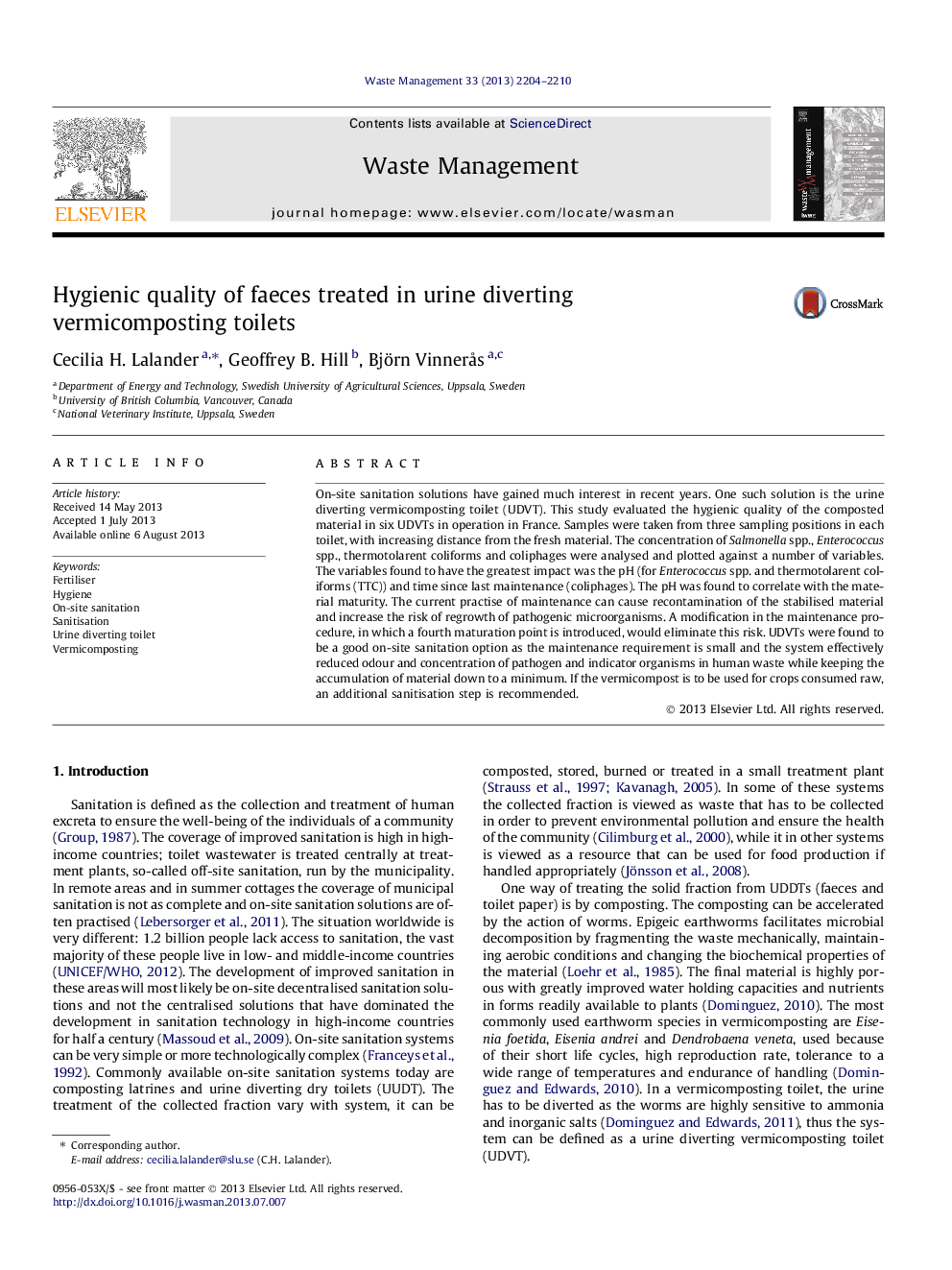| Article ID | Journal | Published Year | Pages | File Type |
|---|---|---|---|---|
| 4471701 | Waste Management | 2013 | 7 Pages |
•Urine diverting vermicomposting toilets (UDVT) is a novel on-site sanitation option.•The sanitisation efficiency of vermicomposting have been widely debated.•The hygienic quality of six UDVT in operation was investigated.•The volume, odour and conc. of microbial parameters in human waste was reduced.•Found to be a great on-site sanitation option.
On-site sanitation solutions have gained much interest in recent years. One such solution is the urine diverting vermicomposting toilet (UDVT). This study evaluated the hygienic quality of the composted material in six UDVTs in operation in France. Samples were taken from three sampling positions in each toilet, with increasing distance from the fresh material. The concentration of Salmonella spp., Enterococcus spp., thermotolarent coliforms and coliphages were analysed and plotted against a number of variables. The variables found to have the greatest impact was the pH (for Enterococcus spp. and thermotolarent coliforms (TTC)) and time since last maintenance (coliphages). The pH was found to correlate with the material maturity. The current practise of maintenance can cause recontamination of the stabilised material and increase the risk of regrowth of pathogenic microorganisms. A modification in the maintenance procedure, in which a fourth maturation point is introduced, would eliminate this risk. UDVTs were found to be a good on-site sanitation option as the maintenance requirement is small and the system effectively reduced odour and concentration of pathogen and indicator organisms in human waste while keeping the accumulation of material down to a minimum. If the vermicompost is to be used for crops consumed raw, an additional sanitisation step is recommended.
